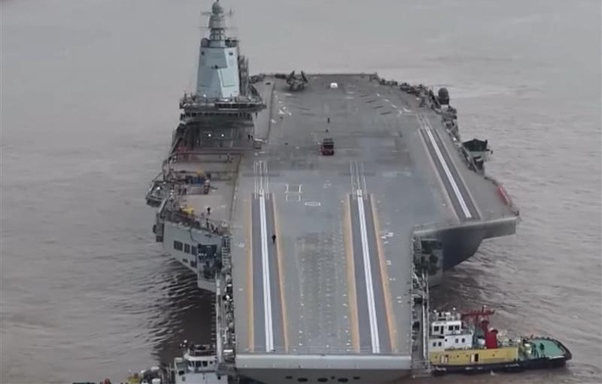How does China’s new supercarrier compare to US carriers in terms of design features and technology level?
How does China’s new supercarrier compare to US carriers in terms of design features and technology level? China’s new supercarrier, known as the Type 003 Fujian, represents a major leap in Chinese naval capabilities, though it still has some differences compared to the latest U.S. carriers. Here’s a comparison of key design features and technology levels between the Fujian and U.S. carriers like the Ford-class:
Propulsion System
Fujian: The Type 003 uses a conventional diesel-electric propulsion system. While this is an upgrade over previous Chinese carriers, it limits its operational range and sustained speed compared to nuclear-powered carriers.
Ford-class: The U.S. Ford-class carriers are nuclear-powered, giving them nearly unlimited range and the ability to operate at high speeds for extended periods. Nuclear propulsion also provides more onboard power for advanced systems, which is especially advantageous for new-generation weapons like lasers and railguns.
Catapult-Assisted Take-Off (CATOBAR)
Fujian: The Type 003 is China’s first carrier to use CATOBAR (Catapult Assisted Take-Off But Arrested Recovery), which allows heavier and more capable aircraft to launch. Its electromagnetic catapult system (EMALS) is similar in principle to the Ford-class system and is a notable advancement for the Chinese navy, especially compared to their older carriers’ ski-jump systems.
Ford-class: The Ford-class was the first to introduce the EMALS technology, allowing for smoother launches and less stress on the aircraft. The system has been refined over time, and Ford-class carriers benefit from decades of U.S. experience in CATOBAR operations.
Aircraft Capacity and Types
Fujian: China’s Type 003 is estimated to carry around 40 to 50 aircraft, including new carrier-based variants of the J-15 fighter and potentially stealthier aircraft like the FC-31.
Ford-class: The Ford-class can carry up to 75 aircraft, including advanced F-35C stealth fighters, EA-18G Growler electronic warfare aircraft, and a range of helicopters and drones. The U.S. has a significant advantage in the breadth and sophistication of its carrier air wings.
Technology and Sensors
Fujian: The Type 003 is believed to have an advanced radar system with a large phased-array radar, enhancing its ability to track multiple targets at longer ranges. However, its radar and sensor systems are likely still a generation behind the latest U.S. capabilities.
Ford-class: The Ford-class carriers have some of the most advanced radar and electronic warfare systems globally, including the AN/SPY-3 and AN/SPY-4 radars that are part of the Aegis Combat System. The U.S. also has a strong lead in integrating shipborne AI and battle management systems, contributing to faster decision-making in complex environments.
Automation and Operational Efficiency
Fujian: The extent of automation on the Type 003 is not fully clear, but it likely requires more personnel and has lower automation levels compared to the Ford-class.
Ford-class: One of the hallmarks of the Ford-class is extensive automation, which reduces the crew size by several hundred and cuts operating costs over time. Systems like the Advanced Weapons Elevators (AWEs) facilitate faster munitions movement and enable quicker sortie rates.
Overall Assessment
The Type 003 Fujian brings China closer to matching the U.S. in carrier capability, but it’s still not at the same level as the Ford-class. The Type 003’s adoption of EMALS and CATOBAR demonstrates significant technological ambition, and it’s a strategic milestone for the Chinese navy. However, the Ford-class carriers maintain an edge in nuclear propulsion, operational flexibility, advanced radar, and automation, which support the U.S. Navy’s global reach and power projection.










